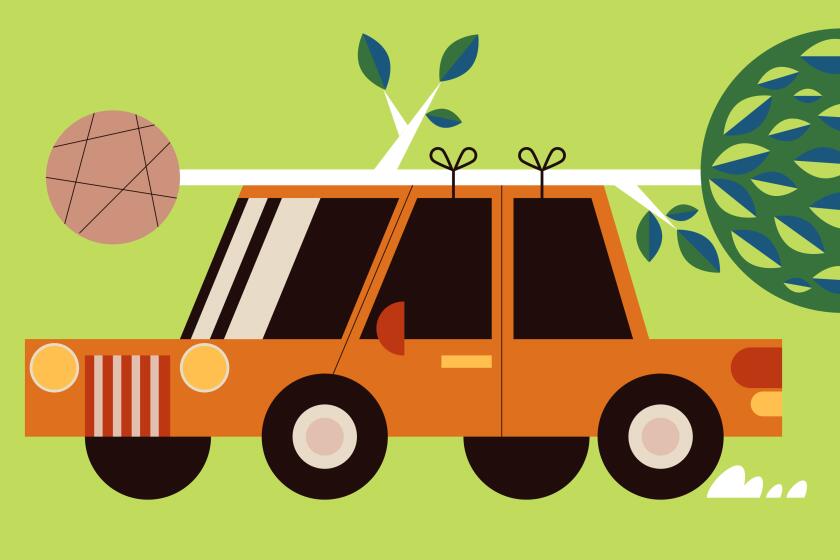Best-laid plants
Real estate prices may be slipping, but the back section of our lot has to be worth its weight in, well, fuel. In the last eight weeks, that part of the yard has become home to include a dozen stalks of corn, 10 tomato plants, a bed of wild strawberries, wild and civilized arugula, two rhubarb plants, Italian parsley and thyme.
I am not a first-wave environmentalist. My Prius does not sport a carpool-access key on its bumper because I bought it only when gas topped $4 a gallon, long after the key allotment had been used up. I cannot say that I planted all this food because organic strawberries fetch almost $5 a basket and lettuce can barely recall the good old days when it was worth merely $1 a head. Or maybe I did. Maybe my subconscious totaled up the price of our dinner salad, or balked at $2 for a bunch of wilted herbs, and nudged me toward the seedling guy at the farmers’ market. Price resistance is a big issue in retail, where people who still have jobs get paid to figure out how many customers they’ll lose if they price a computer at $1,000 instead of $999.99. Spewing twenties at the market every Sunday morning seems finally to have caught up with me.
Food is expensive because it is hemmed in by fuel on both sides. The escalating price of gasoline means that shipping costs more. Forget the South American produce we shouldn’t eat because its carbon footprint is the size of a clown shoe. Even the local produce we are supposed to eat has to get here -- in a truck that runs on gas -- from up the 5 or out the 101. As if that weren’t trouble enough, the ethanol craze has farmers pulling up what we eat and planting corn that we may someday put in our cars. Less supply, stable demand: You get the expensive picture.
I suppose I could strike a politically correct stance, hoe in one hand, organic fertilizer in the other, and say that I planted the yard as a small gesture of rebellion, one woman’s dinner-time revolt against oil dependence. To pull that off, I would need to be doing much more.
For starters, I would have to have a serious talk with the family dog about exactly how much lawn she needs. In a spasm of responsibility last year, we tore up the frontyard and put in a xeriscape -- again, not because we are pure of heart but because the grass was ugly, the water required to make it less ugly seemed excessive, and drought-resistant plants are hard to kill, even with benign neglect. I can’t devote the entire backyard to produce: A dog needs a spot where a dog can be a dog.
In truth, I am not interested in self-sufficiency. For me, part of doing the right thing involves supporting the growers who populate the farmers’ markets and who are as stuck in the fuel crunch as I am. I like talking to Moe, the dried-fruit guy, about our grown children, and I like giving his sidekick a hard time about not having voted in the presidential primary. I like peppers and asparagus and potatoes and cauliflower and nectarines and all the other things I have neither the room nor the inclination to plant. I run a kindergarten operation and I know it: Entry-level growing for the beginner, crops that are as close to foolproof as possible.
I anticipate enough yield this year for a couple of corn puddings and some nice heirloom tomato salads, and my goal is to have enough rhubarb and strawberries, simultaneously, for one grand, lattice-topped pie.
With luck, my limited harvest will keep me from being insufferably smug about my commitment to Mother Earth while enabling me to feel ever so slightly superior to the woman ahead of me at the grocery store, whose apples have almost enough frequent-flier miles for a free cross-country trip.






